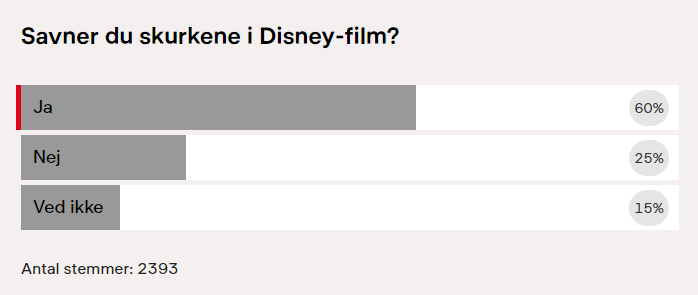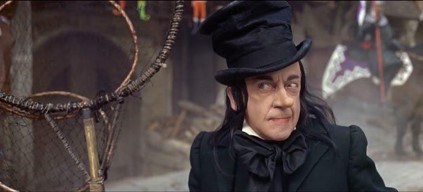The circus is coming back to town!
Supreme Court Justice Stephen Breyer’s retirement was officially announced yesterday and Joe Biden took the opportunity to announce that by the end of February he’d appoint a black woman to replace Breyer.
That’s how identity politics works. And if the president of the United States is willing to be so flagrantly racist and sexist, what do you think is going on everywhere else progressives hold sway these days?
And they hold sway pretty much everywhere.
Maybe you don’t think appointments based on skin color are racist, or that those based on sex are sexist, because they’re positive things. How can something good be racist or sexist? Isn’t it actually sexist and racist to oppose the appointment of a black woman?
Well, yes, it’s racist and sexist to oppose the appoint of a black woman because she’s black and a woman.
Had Biden said, “Listen, man: whoever I appoint, it’s sure as hell not going to be someone who’s black or female,” that would obviously have been racist.
I mean, even you think what he’s actually doing isn’t racist, you can see how my hypothetical would be racist, can’t you?
So let’s make this easy.
According to Biden, “The person I nominate will be someone with extraordinary qualifications, character, experience and integrity—and that person will be the first Black woman ever nominated to the United States Supreme Court.”
Those are his exact words. (And the fans go wild!)
Here’s another way of saying the exact same thing:
“The person I nominate will be someone with extraordinary qualifications, character, experience and integrity—but I will not consider anyone who is Asian, Latino, Native American, or white. And men need not apply.”
Get it?
But forget all that for now—the Danish coverage of the forthcoming nomination and confirmation circus will surely give us plenty of entertainment in the months ahead.
And besides, it’s Friday, so I’d rather get into this article from DR:
Disney movies zoom away from the good and the bad. Now the enemy is ourselves
Simone Løvstad Kristensen, DR.dk, Jan 27
“In Disney’s old movie classics,” Kristensen writes, “it was always a battle between the bad guys and the good guys . And one was never in doubt as to which characters were the bad guys.”
(An aside: it’s not just old Disney movies, it’s the whole fairy tale genre. Fairy tales are allegories and their purpose is instructive. As Chesterton noted, “Fairy tales do not tell children the dragons exist. Children already know that dragons exist. Fairy tales tell children the dragons can be killed.”)
“But where have Disney’s evil supervillains gone?” asks Kristensen.
In the latest film classics, you don’t see the same type of evil villains that the main character has to fight.
It can be seen, for example, in Disney’s latest offering, Encanto, which is an idyllic and colorful tale about the girl Mirabel Madrigal, who lives in a magical house with her family. Suddenly the magic disappears, and one then follows Mirabel on an inner journey to win back the magic. Also in Zootropolis, Inside Out, Soul, Frozen and Vaiana it’s an inner, emotional battle that the main characters have to fight and thus not an evil and repulsive villain.
I don’t think Kristensen intends this as a criticism. It’s just an observation: Disney’s moral universe has, broadly speaking, evolved from the outward to the inward. It’s gone from good and evil being represented by stuff out there (people, animals, monsters) to stuff inside (feelings, beliefs, ideas).
That’s just as instructive: learning that we can slay our inner demons is just as important as learning that we can slay external dragons.
Neither Kirsten nor any of the “experts” she talks to are suggesting that Frozen and Inside Out and Soul aren’t good movies: they’re just examining this paradigm shift in villainy.
So here’s what her experts are saying.
DR’s film critic Maria Månson:
When Disney films today lack a clear villain, it’s about the wave of self-realization that has swept over the western world over the past two decades.
Our own worst enemy is ourselves. You’re the one holding yourself back. Become the best version of yourself. We’re bombarded with reasons to look inward and somehow find a true core that can redeem us and make us something very special.
I kind of think that Disney has pulled back a bit on the villains from a good and maybe slightly anxious conscience. It has probably been thought that the world is more gray than black and white. And it’s also hard to make a villain without getting stereotypical.
Kirsten Drotner, Professor Emeritus of Media Studies at the University of Southern Denmark:
One cannot have a classic fairy tale without a struggle between opposing forces, namely good and evil.
It’s the basic fairy tale formula, and it’s the one that Disney still runs on, but in a customized version.
Disney today focuses more on individualizing the issues. The films are more about a main character who has a personal task to solve. Instead of it becoming a conflict between good and evil, it becomes more a process for the main characters to find themselves.
Disney is a global player and must thus create films that have to speak to diverse audiences in very diverse cultures. When the main character’s problem is individual, viewers don’t connect it so easily to a particular culture.
Jon Andreasen, head of the Animation director program at the Danish Film School
It’s positive that you try to nuance the contrast between good and evil.
(These nuances) are also creeping just as quietly into the game world into the stories they tell.
I think it’s good if the villains in general are really, really evil. A villain is almost the most important thing, but the more you can recognize yourself in them, the better.
Disney is going to get nicer and nicer, I have no doubt about that.
I think that this streaming market will make you have to look for the villains and the good stories that will provoke you a little. You will have to find them outside Disney’s bubble of niceness.
Kristensen notes that Andreasen “thinks that Disney’s new film Encanto is a colorful and beautiful story, but at the same time it is so politically correct that it ends up being boring.”
She wraps things up on a nostalgic note:
Maria Månson also longs for the evil villains.
“I even love villains, so I miss them. Who doesn’t remember the horror that the evil queen in Snow White gave when they were watching the film as a child? She is goddam bad,” says Maria Månson.
DR News has tried to get a comment from Disney, but they have not returned our inquiries.
(Månson didn’t say “goddam bad,” she said eddermame slem, and there’s no literal translation that would make any sense at all. “Goddam bad” isn’t strong enough, I don’t think, but “motherfucking bad” seemed too much.)
The article ends with a little informal survey asking readers whether they miss the villains in Disney movies, and here’s a screenshot of how it looked at the time I read the article:

Internet polls are meaningless but it satisfied my own confirmation bias to see that the villains were winning.
Having already acknowledged that it’s just as important to know that we can slay the demons within us as it is to know we can slay the dragons out in the world, we shouldn’t forget that they’re not the same thing.
And both lessons are needed.
Self-awareness and self-mastery are vitally important, but they won’t get you very far if you’re unprepared to deal with an external foe.
Disney isn’t the only company producing movies for children, so their focus on storylines about inner rather than outward struggles isn’t such a big deal in itself, but Maria Månson’s notion that the shortage of Disney villains is a symptom of our social narcissism is on point.
Earlier this week—or was it last week?—I wrote something to the effect that we’re unprepared to confront Russia and China because we’re too busy hating ourselves to bother defending ourselves.
I might have written: The dragons are out there, circling Ukraine and Taiwan (among others), but we’re too busy with our own inner demons to do anything about them.
The featured image for this post is the Child Catcher from Chitty-Chitty Bang-Bang, the most Disney-esque movie never produced by Disney. (It did, however, feature the talents of Disney songwriters.)
I can remember nothing from early childhood that frightened me more than the Child Catcher—even the flying monkeys from the Wizard of Oz were a very distant second. He was a terrible villain: as sneaky as he was evil. Behold the evil (if you dare):
It’s not just that he’s terrifyingly evil: it’s how much he enjoys his own godawful nastiness.
The Child Catcher didn’t teach me anything about myself. He taught me there was evil afoot in the world and it was not beneath trickery to try and catch me. And that it really, really wanted to catch me. Every sensibly raised child is sooner or later told not to take candy from strangers—but no child of the 70s who’d seen Chitty needed to hear that advice in words. The grotesque leer of the hideous Child Catcher was all the lesson we needed.
Well, I shouldn’t speak for anyone else. It was the only lesson I ever needed.
Any modern re-make of Chitty would surely present a more nuanced picture of the Child Catcher. The script writers would have to give him a fully-developed and redemptive character arc. We’d have to understand that his wickedness was only the consequence of childhood trauma or neglect. Most likely Jeremy and Jemima would help him recover his lost innocence and begin to heal. The movie would probably end with him handing out free candy to the liberated children of Vulgaria.
No thanks. I like my villains the way I like my coffee: unrepentantly evil.
